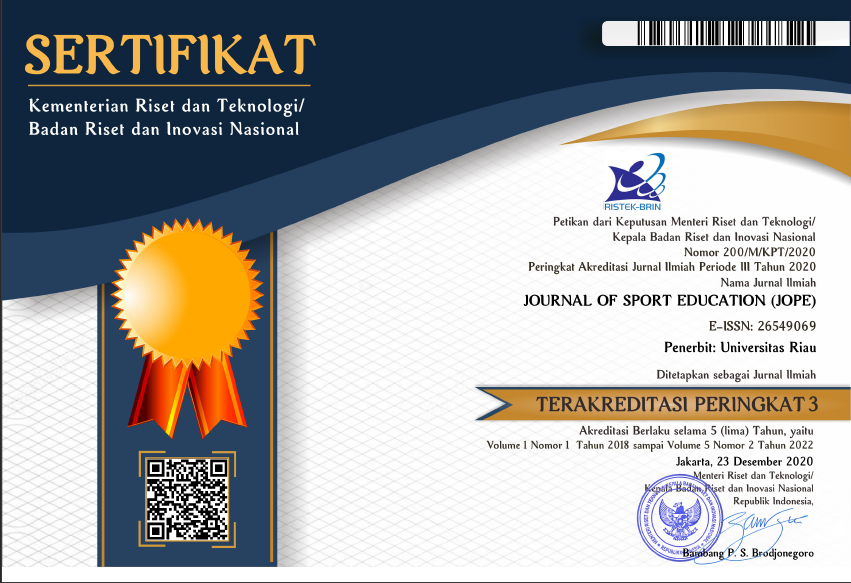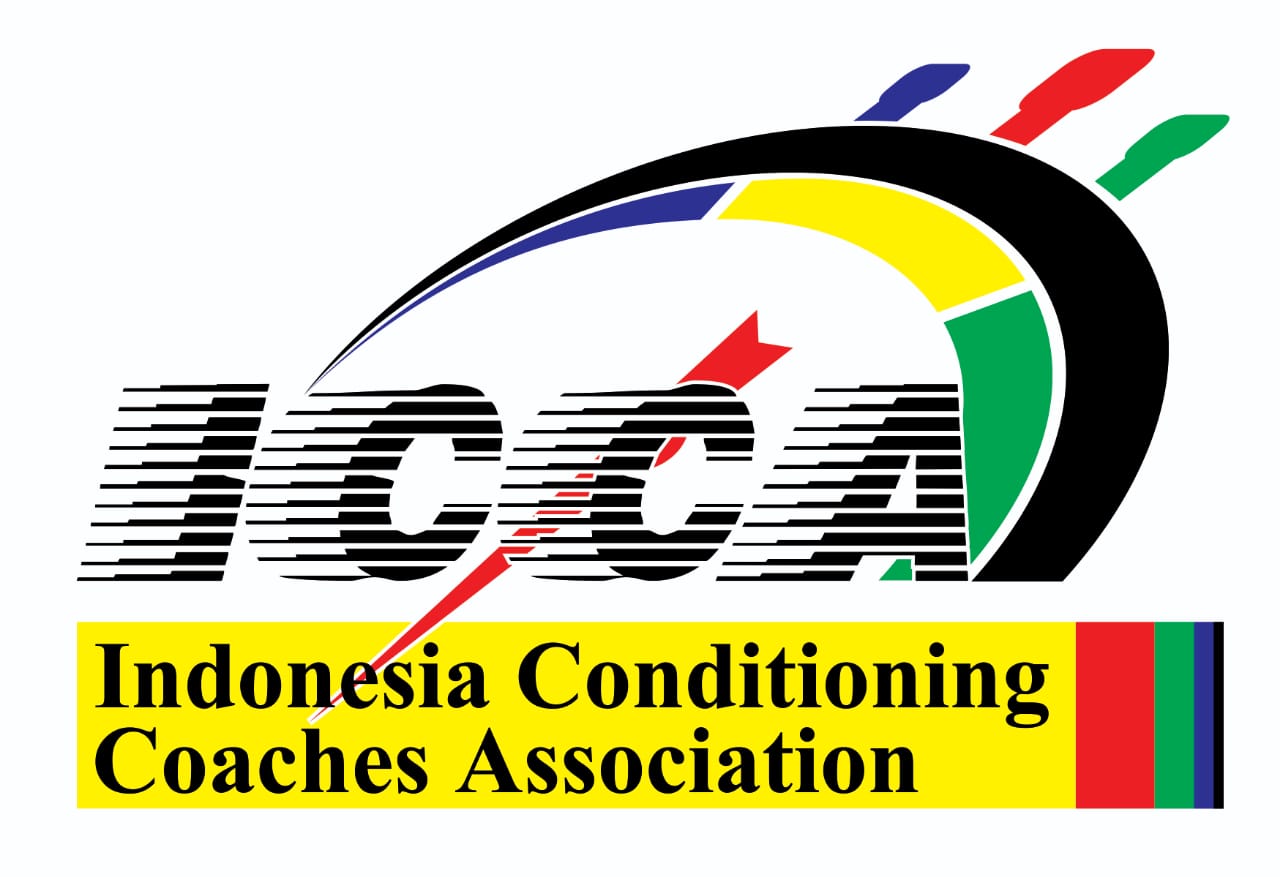Challenges encountered by novice divers in their initial four open water dives of certification programs
Abstract
(English)
To achieve an Open Water Diver (OWD) license, a diver is required to complete a minimum of four open water dives, which are typically carried out during the certification exam for open water diving. These initial dives are known to present challenges and difficulties for divers. The present study aims to identify the specific issues that arise during the first four open water dives in the training and certification of Open Water Divers. A total of ten participants who had undergone OWD certification training between September 2-5, 2022, in Karimunjawa waters, were selected to participate in the study. The participants consisted of three male and seven female divers, aged between 19-23 years old. The study identified a range of challenges experienced by the participants, including five physiological issues, seven equipment-related technical problems, and thirteen issues related to material mastery. Almost all participants reported encountering some form of difficulty during their first four open water dives. However, the severity of these issues was generally mild, and they did not significantly impede the diving process. The findings of this study suggest that novice divers are likely to encounter difficulties during their initial open water dives. Nevertheless, these issues can be addressed through experience and training. The study highlights the importance of developing strategies and interventions that aim to reduce the occurrence of these issues and enhance the overall safety and effectiveness of open water diving certification programs
(Indonesian)
Penelitian ini bertujuan untuk mengidentifikasi permasalahan spesifik yang muncul selama empat penyelaman perairan terbuka pertama dalam pelatihan dan sertifikasi Penyelam Perairan Terbuka. Sebanyak sepuluh peserta yang telah menjalani pelatihan sertifikasi OWD pada tanggal 2-5 September 2022 di perairan Karimunjawa dipilih untuk mengikuti penelitian. Pesertanya terdiri dari tiga penyelam laki-laki dan tujuh penyelam perempuan, berusia antara 19-23 tahun. Studi ini mengidentifikasi berbagai tantangan yang dialami oleh para peserta, termasuk lima masalah fisiologis, tujuh masalah teknis terkait peralatan, dan tiga belas masalah terkait penguasaan materi. Hampir semua peserta melaporkan mengalami beberapa kesulitan selama empat penyelaman perairan terbuka pertama mereka. Namun, tingkat keparahan masalah ini umumnya ringan, dan tidak menghambat proses penyelaman secara signifikan. Temuan penelitian ini menunjukkan bahwa penyelam pemula kemungkinan besar akan menghadapi kesulitan selama penyelaman awal di perairan terbuka. Namun permasalahan ini dapat diatasi melalui pengalaman dan pelatihan. Studi ini menyoroti pentingnya mengembangkan strategi dan intervensi yang bertujuan untuk mengurangi terjadinya masalah-masalah ini dan meningkatkan keselamatan dan efektivitas program sertifikasi penyelaman perairan terbuka secara keseluruhan
Copyright © The Author (s) 2023

Keywords
References
Abercrombie, P. (2012). Advanced Open Water Diver Manual (H. Averill, Ed.). NASE Worldwide.
Aquila, I., Pepe, F., Manno, M., Frati, P., Gratteri, S., Fineschi, V., & Ricci, P. (2018). Scuba diving death: Always due to drowning? Two forensic cases and a review of the literature. In The Medico-legal journal (Vol. 86, Issue 1, pp. 49–51). https://doi.org/10.1177/0025817217734481
Arbanto, B., Putra, K. P., & Ardha, M. A. al. (2018). Perbedaan tingkat keberhasilan 3 metode ekualisasi pada penyelam terlatih di lingkungan air tawar. Jurnal Keolahragaan, 6(2), 193–199. https://doi.org/10.21831/JK.V6I2.21560
Bove, A., & Davis, J. (1990). Diving Medicine (2nd ed.). Saunders.
Buzzacott, P., & Vann, R. (2009). Dive problems and risk factors for diving morbidity Scuba Injury monitoring View project Hypercapnia: cognitive effects and monitoring View project. Article in Journal of the South Pacific Underwater Medicine Society. https://www.researchgate.net/publication/228104576
Cohen, R., Baluch, B., & Duffy, L. J. (2018). Defining extreme sport: Conceptions and misconceptions. Frontiers in Psychology, 9(OCT), 1974. https://doi.org/10.3389/FPSYG.2018.01974/BIBTEX
Covington, D., Lee, R. H., Toffel, S., Bursian, A., Krack, K., & Giordano, C. (2019). Technical Freediving: An Emerging Breath-Hold Diving Technique. Journal of Human Performance in Extreme Environments, 15(1). https://doi.org/10.7771/2327-2937.1122
Davenport, D. A. (1979). Boyle’s law. Journal of Chemical Education, 56(5), 322. https://doi.org/10.1021/ed056p322.1
Farida, I., Arini, D., & Astuti, N. M. (2020). Aplikasi tehnik equalisasi untuk mencegah barotrauma pada penyelam tradisional. GEMASSIKA: Jurnal Pengabdian Kepada Masyarakat, 4(2), 155–164. https://doi.org/10.30787/GEMASSIKA.V4I2.545
Farrell, E. (2006). One Breath: A Reflection on Freediving. Pynto.
Giglio, V. J., Luiz, O. J., & Ferreira, C. E. L. (2020). Ecological impacts and management strategies for recreational diving: A review. Journal of Environmental Management, 256, 109949. https://doi.org/10.1016/J.JENVMAN.2019.109949
Giuriato, G., Pedrinolla, A., Federico, S., & Venturelli, M. (2018). Muscle cramps: A comparison of the two-leading hypothesis. Journal of Electromyography and Kinesiology, 41, 89–95. https://doi.org/10.1016/J.JELEKIN.2018.05.006
Golding, J. F. (2016). Sea sickness. Handbook of Clinical Neurology, 137, 371–390. https://doi.org/10.1016/B978-0-444-63437-5.00027-3
Hart, A. J., White, S. A., Conboy, P. J., Bodiwala, G., & Quinton, D. (1999). Open water scuba diving accidents at Leicester: five years’ experience. Emergency Medicine Journal, 16(3), 198–200. https://doi.org/10.1136/EMJ.16.3.198
Haworth, D. T. (1967). Charles’ Law: A general chemistry experiment. Journal of Chemical Education, 44(6), 353. https://doi.org/10.1021/ed044p353
Kasli, E., & Aminullah. (2016). Pengaruh massa jenis benda terhadap tekanan hidrostatis. Jurnal Pendidikan Geosfer, 1(1), 16–19. http://202.4.186.66/JPG/article/view/17424
Koriwchak, M. J., & Werkhaven, J. A. (1994). Middle ear barotrauma in scuba divers. Journal of Wilderness Medicine, 5(4), 389–398. https://doi.org/10.1580/0953-9859-5.4.389
Lackner, J. R. (2019). Sea sickness: Our Evolving Understanding and Problems. The Curated Reference Collection in Neuroscience and Biobehavioral Psychology. https://doi.org/10.1016/B978-0-12-809324-5.21621-0
Loske, A. M. (2013). Fundamentals of scuba diving physics. International Journal of Sports Science, 2013(2), 37–45. https://doi.org/10.5923/j.sports.20130302.01
Matsuura, Y., Matsunaga, N., Iizuka, S., Akuzawa, H., & Kaneoka, K. (2020). Muscle Synergy of the Underwater Undulatory Swimming in Elite Male Swimmers. Frontiers in Sports and Active Living, 0, 62. https://doi.org/10.3389/FSPOR.2020.00062
Megha, R., Farooq, U., & Lopez, P. P. (2022). Stress-Induced Gastritis. StatPearls. https://www.ncbi.nlm.nih.gov/books/NBK499926/
Mitchell, S. J., & Doolette, D. J. (2016). Extreme scuba diving medicine. Extreme Sports Medicine, 313–333. https://doi.org/10.1007/978-3-319-28265-7_25/COVER
Paulev, P. E., & Zubieta-Calleja, G. (2007). High Altitude Diving Depths. Http://Dx.Doi.Org/10.1080/15438620701526795, 15(3), 213–223. https://doi.org/10.1080/15438620701526795
Putra, K. P., Karwur, F. F., & Hidayati, N. W. (2020). VO2max Berkorelasi Negatif dengan Kemampuan Tahan Nafas (Apnea). JOSSAE: Journal of Sport Science and Education, 5(2), 139. https://doi.org/10.26740/jossae.v5n2.p139-147
Putra, K. P., Pratama, R. P., & Nugroho, K. P. A. (2020). Kapasitas Vital Paru Berkorelasi Positif dengan Kemampuan Tahan Nafas pada Laki-Laki Usia 19-25 Tahun. JOSSAE: Journal of Sport Science and Education, 5(1), 25. https://doi.org/10.26740/jossae.v5n1.p25-32
Putra, K. P., Triandhini, R. L. N. K. R., Wicaksana, A., & Messakh, S. T. (2022). Body fat levels and its negative correlation to apnea duration. Jurnal Keolahragaan, 10(1), 110–117. https://doi.org/10.21831/JK.V10I1.48131
Rusoke-Dierich, O. (2018). Basic Diving Equipment. Diving Medicine, 15–19. https://doi.org/10.1007/978-3-319-73836-9_2
Scuba Schools International. (2022). Recreational Scuba Standards. SSI International GmbH.
Seedhouse, E. (2011). No Limits Freediving. In Ocean Outpost (pp. 3–18). Springer. https://doi.org/10.1007/978-1-4419-6357-4_1
Sherwood, L. (2015). Fisiologi Manusia: Dari Sel ke Sistem (D. R. Herman Octavius Ong, Albertus Agung Mahode, Ed.; 8th ed.). EGC.
Sistiasih, V. S. (2014). Faktor Fisik Dominan Penentu Kemampuan Apnea Pada Selam. 14.
Tetzlaff, K., Lemaitre, F., Burgstahler, C., Luetkens, J. A., & Eichhorn, L. (2021). Going to Extremes of Lung Physiology–Deep Breath-Hold Diving. In Frontiers in Physiology (Vol. 12). Frontiers Media S.A. https://doi.org/10.3389/fphys.2021.710429
Toyoshima, J., & Nadaoka, K. (2015). Importance of environmental briefing and buoyancy control on reducing negative impacts of SCUBA diving on coral reefs. Ocean & Coastal Management, 116, 20–26. https://doi.org/10.1016/J.OCECOAMAN.2015.06.018
DOI: http://dx.doi.org/10.31258/jope.5.2.91-102
Refbacks
- There are currently no refbacks.











